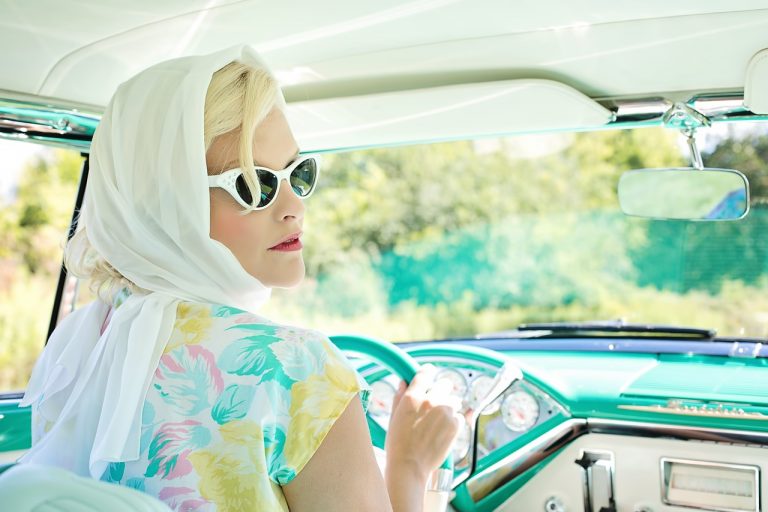Fashion and technology, two seemingly distinct domains, are now converging at a remarkable pace, redefining the way we think about clothing and style. In this article, we’ll explore the intriguing partnership between tech and textiles, diving deep into the historical context, contemporary innovations, and future possibilities. This intersection is more than just a passing trend; it’s a transformation that’s revolutionizing the industry, one smart fabric at a time.
Historical Perspective
Fashion has always been about self-expression, but it’s also a reflection of the time in which it exists. From the invention of the sewing machine to the rise of synthetic materials, the relationship between fashion and technology is rooted in history. Early innovations like zippers and Velcro revolutionized clothing design, making garments more functional and efficient. The journey towards wearable tech began long ago.
Present-Day Collaborations
In the 21st century, we’re seeing high-tech fabrics and smart textiles that can do much more than just cover our bodies. Innovations like moisture-wicking fabrics, self-cleaning textiles, and color-changing materials have taken center stage. Moreover, wearable technology, from fitness trackers to smartwatches, has become an integral part of our daily lives. The blend of fashion and technology offers not only aesthetic appeal but also enhanced functionality.
Fashion Shows and Augmented Reality
Fashion shows, once reserved for an elite audience, have become a global spectacle thanks to augmented reality (AR) and virtual reality (VR). These technologies provide immersive experiences, allowing anyone with a smartphone or VR headset to participate in runway shows. Designers now use AR and VR to create digital versions of their collections, fostering a new era of interactive fashion presentations.

Sustainable Fashion Tech
The fashion industry has been scrutinized for its environmental impact. However, the integration of technology has opened the door to more sustainable practices. We now have biodegradable materials, recycling techniques, and even clothing made from repurposed electronic components. Fashion tech is not just about being fashionable; it’s also about being eco-friendly.
Smart Clothing: Beyond Aesthetics
While smart clothing certainly looks futuristic and stylish, it’s more than just a fashion statement. It serves functional purposes, such as monitoring your health and fitness. We’re witnessing clothing items embedded with sensors that track heart rate, temperature, and even posture. This technology has the potential to revolutionize the healthcare and fitness industries.
The Business of Fashion Tech
With the rapid growth of fashion tech, it’s essential to understand the market dynamics. Major players like Apple, Google, and Tesla are exploring the world of wearables, while startups are emerging with groundbreaking ideas. The industry is projected to continue its upward trajectory, with consumers embracing the marriage of fashion and technology.
The Challenges and Ethical Concerns
The tech-infused fashion world isn’t without its challenges. Privacy and security are significant concerns, as wearable tech collects vast amounts of personal data. Additionally, the disposal of electronic components in clothing poses environmental risks. As the industry evolves, addressing these issues will be crucial.

The Future of Fashion Tech
What does the future hold for fashion tech? Predicting with certainty is a challenge, but we can anticipate more seamless integration of technology into our daily attire. From smart fabrics that adapt to weather conditions to interactive clothing that responds to our moods, the possibilities are endless.
Conclusion
The intersection of fashion and technology is not just a trend; it’s a revolution. From the historical evolution to present-day collaborations and sustainable innovations, the impact is undeniable. Fashion tech is changing how we dress, how we experience fashion, and how we live our lives. To fully embrace this transformation, it’s essential for consumers and the industry to stay informed and participate actively in this dynamic evolution.
FAQs
1. What is smart clothing, and how does it work? Smart clothing is infused with technology, such as sensors and conductive threads, allowing it to perform various functions like tracking health data or adjusting to environmental conditions.
2. How is fashion tech contributing to sustainability? Fashion tech promotes sustainability through the use of eco-friendly materials, recycling methods, and repurposing electronic components into clothing items.
3. Are there privacy concerns related to wearable technology? Yes, privacy is a significant concern as wearable tech collects personal data. Manufacturers need to implement strong security measures to protect user information.
4. What are some notable examples of AR and VR in fashion shows? Brands like Gucci and Prada have incorporated AR and VR into their runway shows, offering immersive, digital fashion experiences to a global audience.
5. What can we expect from the future of fashion tech? The future of fashion tech is poised to bring us clothing that adapts to weather conditions, interactive attire that responds to our emotions, and further seamless integration of technology into our daily wardrobes.












+ There are no comments
Add yours